Published: 20 December 2009
Projecting the impact of demographic change on the demand for and delivery of health care in Ireland
Health and health care are particularly sensitive to the size and make-up of the population. Increasing life expectancy in Ireland has resulted in an increasing elderly population, who require both more health care, on average, than younger people and a different combination of services. Population ageing is not the only demographic challenge we face however. Relatively high numbers of births and recent inward migration have led to a larger population. In the future this will exert increasing pressure on Irish health care resources. Effective planning for the consequences of these trends will be crucial in coping with the associated challenges.
This report, undertaken by a consortium of researchers from the ESRI and TCD and supported by the HRB and HSE, analyses the impact of demographic changes on health needs and the healthcare system in Ireland. The report showed that there will be significant population growth and ageing between 2009 and 2021, from 4.24 million in 2006 to between 4.71 million and 5.1 million by 2021 depending on migration developments. The age composition of the population will change, with the proportion aged under 5 years projected to fall absolutely (by 32,000) and relatively (by 1.2 per cent). Those aged 65+ will increase from 11 per cent to 15.4 per cent of the population, with those aged 85+ increasing from 1.1 per cent to 2.1 per cent, which represents an absolute increase of 42,900 individuals. The fall in the proportion of younger age groups will be most pronounced in Western and Southern counties. Based upon current utilisation patterns these demographic changes would imply:
54 per cent increase in inpatient beds and a 64 per cent increase in day beds between 2007 and 2020 or a total bed growth requirement of 4 per cent per annum.
General practice consultations may increase by about one-third and half among those aged 16+ between 2006 and 2021.
Outpatient consultations may rise by about a quarter on a current use basis but integration of trends from the period from 2001 to 2006 would see the proportionate increase in consultations in 2021 rise by almost 60 per cent over 2006.
Projections of prescribing to 2021 estimate that total ingredient costs will escalate to €1.5 billion on a current use basis and €2.4 billion if past trends from 1995-2006 prevail from €1.06 billion in 2006. These are increases of 42 per cent and 126 per cent.
Projections for demand for residential long-term care for people aged 65 + in 2021 suggests a requirement for an additional 13,324 long-term care places or 59 per cent. This is 888 places per annum from 2007-2021 for people aged 65 years and over assuming an unchanged acute care system.
The increased demand for health care likely to stem from demographic and epidemiological change in the Irish population is significant. Even if national finances improve substantially, the current way in which care is delivered will be unsustainable within any reasonable budget given the nature of demographic change. This demands a reconfiguration and intensification in the use of health care resources and improvements in levels of efficiency. Changes in the manner in which current resources are used and a reorganisation of services will moderate the extent of investment in services required: A full implementation of the 2001 Primary Care Strategy would make better use of existing primary care resources and moderate the impact of population ageing and GP ageing and feminisation. Similarly, more and better use could be made of other medical professionals, such as practice nurses and pharmacists. However, even with restructuring the number of GPs being trained in Ireland will need to increase to keep pace with demographic developments. Implementing government policy of training 150 GPs a year would make a substantial difference but should healthcare policy focus on increasing use of primary care this number would need to increase further. Analysis shows that a substantial proportion of resources in Irish outpatient care are expended on monitoring and maintaining chronic health conditions that could be just as successfully managed and much more cheaply managed in primary care. The HSE's preferred health system strategy is premised upon the reduction of average inpatient length of stay in Irish hospitals through the greater use of day case and particularly day surgery. Although the varying complexity of the case load across hospitals can lead to differences in day case rates, the current variability would suggest that there is substantial potential to increase day rates across the Irish hospital system and in doing so significantly increase the level of efficiency. Average length of stay is also influenced by patient characteristics and older age and chronic illness in particular. Analysis suggests that the lack of step down services has a critical influence in reducing the efficiency of acute hospitals in Ireland, particularly voluntary hospitals whose patient load tends to be older and more likely to have disabling conditions.
